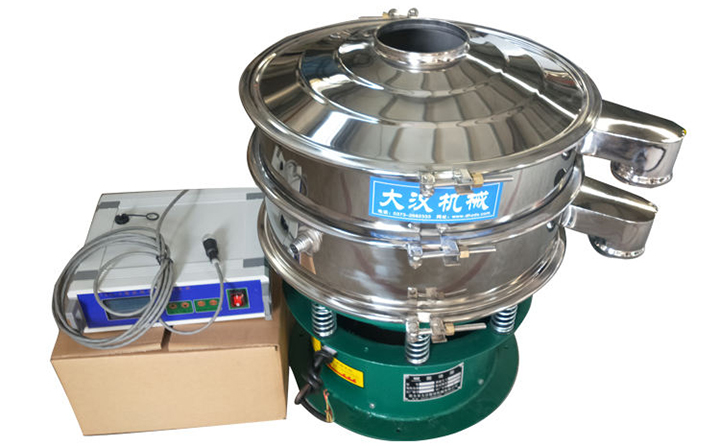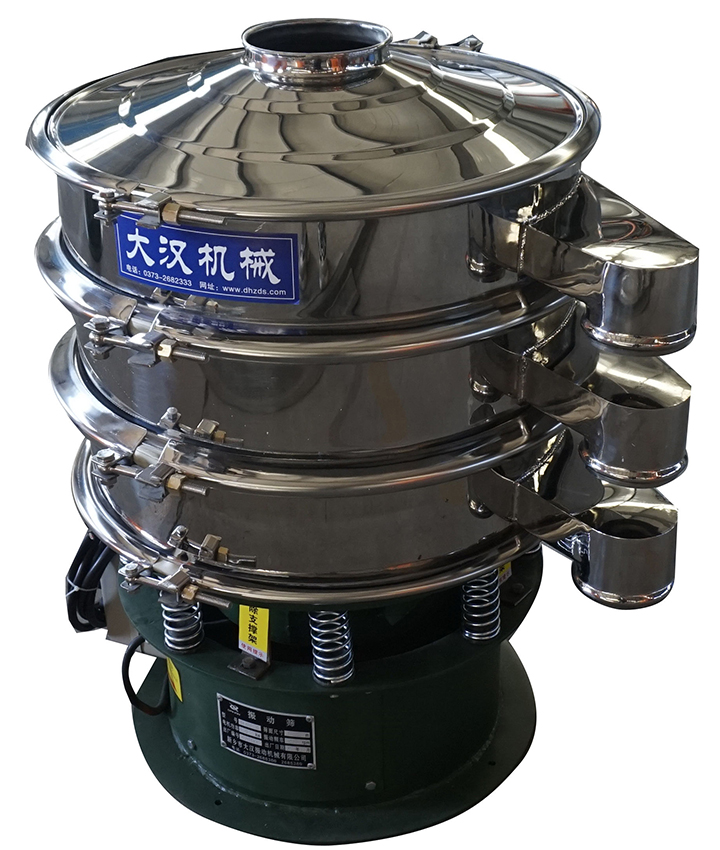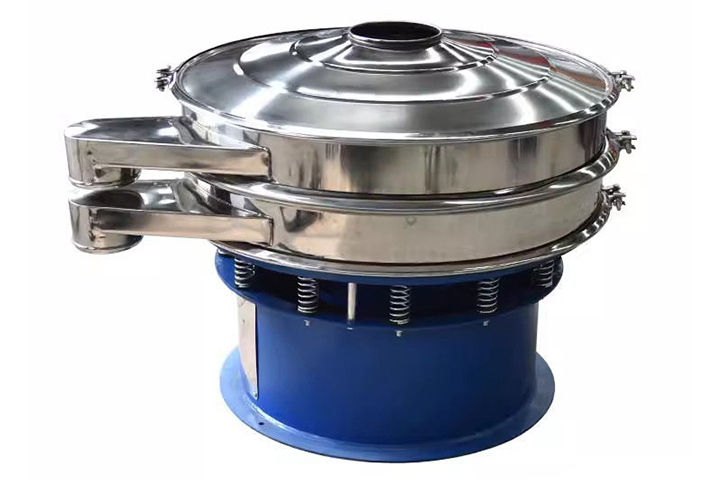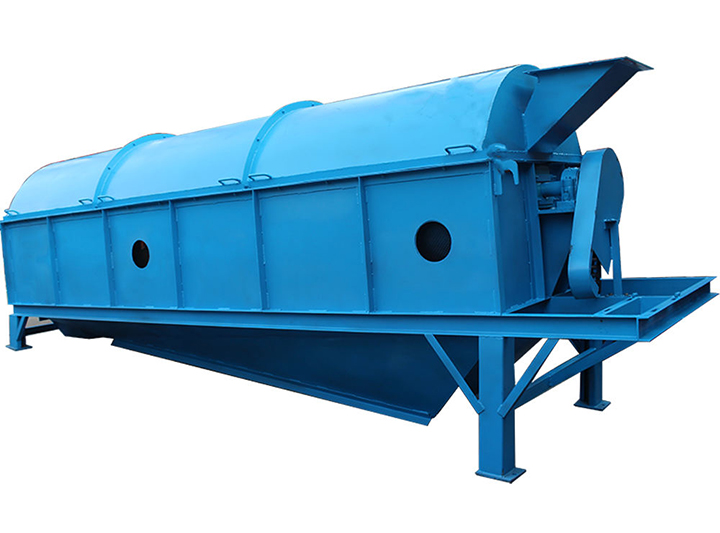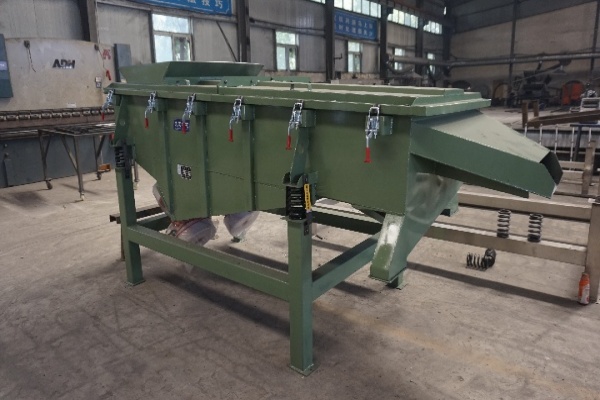
Linear Sieving Machine
Linear sieving machine is mainly used for screening and grading of materials in mining, metallurgy, food, pharmaceutical, chemical and construction industries, while realizing efficient and accurate separation of various granular materials. Prices for it typically range from$600to $5000/Set.
Processing particle size range:0.074-10mm
Screen mesh:2-400 mesh
Processing capacity:0.12-32 tons/hour
Screen layer number:1-6 layers
Motor power:total power 0.74-4.4kw
Vibration parameters:double amplitude 3-4.5mm
What is linear sieving machine?
Linear sieving machine is suitable for processing dry granular materials with particle size of 0.075-10mm, moisture content less than 70% and non-sticky. Its core operation relies on dual vibration motors to convert rotational motion into linear vibration, pushing the material forward on the multi-layer screen surface. This design can separate the material into multiple grades at the same time and then discharge them through their respective outlets.

The equipment has low energy consumption and high production capacity. It adopts a fully enclosed structure to prevent dust leakage and can be seamlessly integrated into the production line. The number of screen layers is 1-6 layers (3 layers are recommended for optimal efficiency), which can meet the diverse industrial needs from coarse classification to fine sorting. The machine is CE and ISO certified, reliable, and the price range is US$900-6000 per unit.
What are the advantages of linear sieving machine?

Linear vibrating screens have outstanding performance in the screening field with multiple advantages: its screening accuracy can reach 97%, and its maximum processing capacity is 30 tons per hour, which is far higher than the operating level of traditional equipment; at the same time, it has excellent material adaptability and can accurately process various types of particles in the range of 2-400 meshes to meet diversified production needs. The equipment maintains low noise characteristics (less than 75 decibels) during operation, effectively reducing interference in the working environment; the structural design focuses on simplification, with fewer moving parts, and convenient screen replacement operation, which greatly reduces downtime and maintenance time and improves production efficiency. In addition, the fully enclosed structure combined with a strict sealing process can effectively suppress dust spillage, achieve dust-free operation, and meet environmental protection standards.
Technical parameters of linear sieving machine
| Model | Layer | Screening Area (mm) | Mesh Size (mesh) | Particle Size (mm) | Capacity (t/h) | Power (kw) | Vibration Direction Angle (°) | Screen Inclination (°) | Dual Amplitude |
| DZSF-520 | 1-6 layers | 500*2000 | 2-400 | 0.074-10 | ≤3 | 0.37×2 | 45-60 | 0-7 | 3-4.5 |
| DZSF-525 | 500*2500 | ≤5 | 0.37×2 | ||||||
| DZSF-612 | 600*1200 | ≤8 | 0.37×2 | ||||||
| DZSF-1020 | 1000*2000 | ≤12 | 0.75×2 | ||||||
| DZSF-1025 | 1000*2500 | ≤16 | 0.75×2 | ||||||
| DZSF-1030 | 1000*3000 | ≤20 | 1.1×2 | ||||||
| DZSF-1224 | 1200*2400 | ≤23 | 1.5×2 | ||||||
| DZSF-1525 | 1500*2500 | ≤28 | 1.5×2 | ||||||
| DZSF-1530 | 1500*3000 | ≤32 | 2.2×2 |
What is the working principle of linear sieving machine?
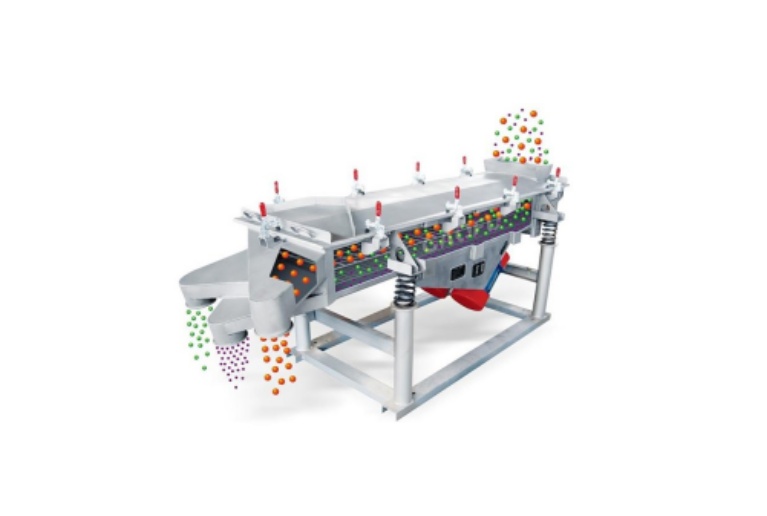
The equipment runs through two synchronous vibrating motors rotating in opposite directions. This design produces linear vibration, which causes the material to bounce on the screen surface and move forward. Smaller particles fall to the lower layer through the screen holes, while larger particles remain on the upper screen surface and are discharged separately. By adjusting the vibration amplitude and angle, the screening efficiency can be optimized for different material characteristics to ensure accurate separation and increase production capacity.
Where can linear sieving machine be used?
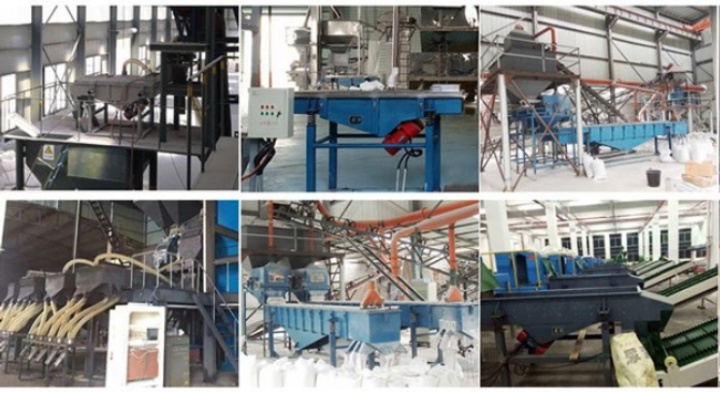
Linear vibrating screens are widely used in many industries due to their stable screening performance. In the mining and metallurgical fields, they can be used for fine screening of ores, minerals and metal powders; in the food industry, they can accurately grade raw materials such as grains, beans, spices and even flour; the pharmaceutical industry relies on its reliable sorting ability to complete the screening of medicinal particles and powder raw materials; in the chemical industry, it is suitable for the separation and processing of materials such as chemical powders, plastic particles and fertilizers; in the construction industry, it is an important tool for the classification of building materials such as sand, cement and aggregates.
Linear sieving machine has been deeply integrated into the production processes of mining, food, pharmaceuticals, chemicals, construction and other fields with its core advantages such as the linear vibration principle driven by dual vibration motors, 97% screening accuracy and a maximum processing capacity of 30 tons/hour, as well as the classification capacity covering 1-6 layers of screen surface. Its low-noise operation, easy-to-maintain structure and fully enclosed dust-proof design not only meet the needs of fine screening of diversified materials, but also meet the requirements of modern industry for efficiency improvement and green production. With the iteration of technology and the upgrading of industry demand, this equipment will continue to play the dual advantages of technological accumulation and market adaptability, providing stable support for improving the quality and efficiency of industrial screening links.
